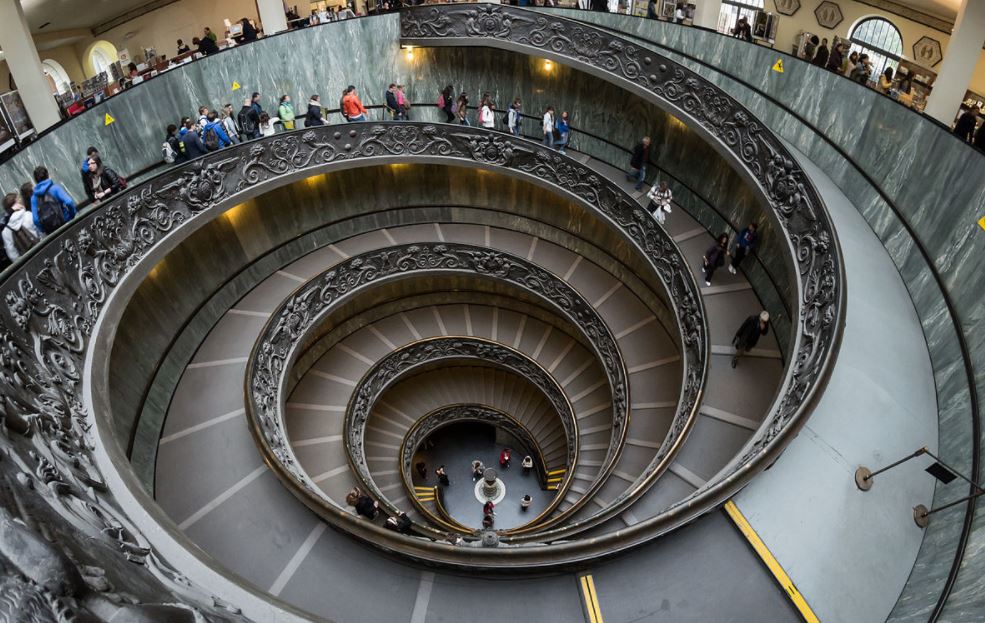If you ever get a chance to roam around the Vatican Museums, then you’ll certainly come across one of the most amazing staircases in the world.
In this article, we’ll take a closer look at some of the most interesting facts about the Bramante Staircase, an absolute masterpiece of Renaissance architecture.
1. It was designed by an influential Renaissance architect
The Bramante Staircase was as the name implies designed by Renaissance artist Donato Bramante (1444-1514), one of the most renowned architects of his time.
Apart from designing various structures in Milan, he also brought his distinctive Renaissance architecture to Rome. He designed the Tempietto, one of the most influential buildings in Rome, and then went on the design the original version of St. Peter’s Basilica.
It’s fair to conclude that the man put his permanent mark on the two biggest cities in Italy today!
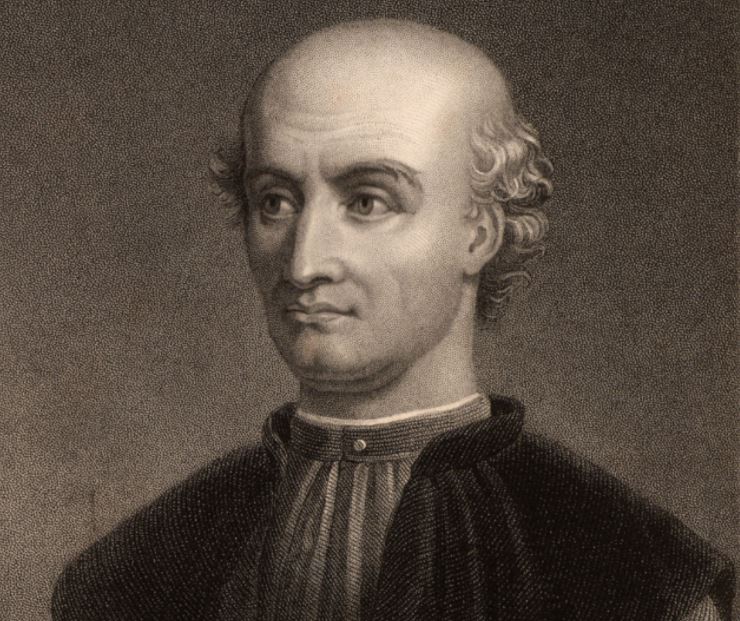
2. It was constructed in the early 16th century
Bramante arrived in Rome in the year 1499 and found the company of Cardinal Della Rovere, a man who eventually became Pope Julius II, a huge patron of the arts at the time.
This means that he became extremely busy upon his arrival because apart from working on the Tempietto and St. Peter’s Basilica, he also designed the amazing spiraling staircase which is now located in the Vatican Museums.
This masterpiece of the Renaissance was eventually completed in the year 1505.
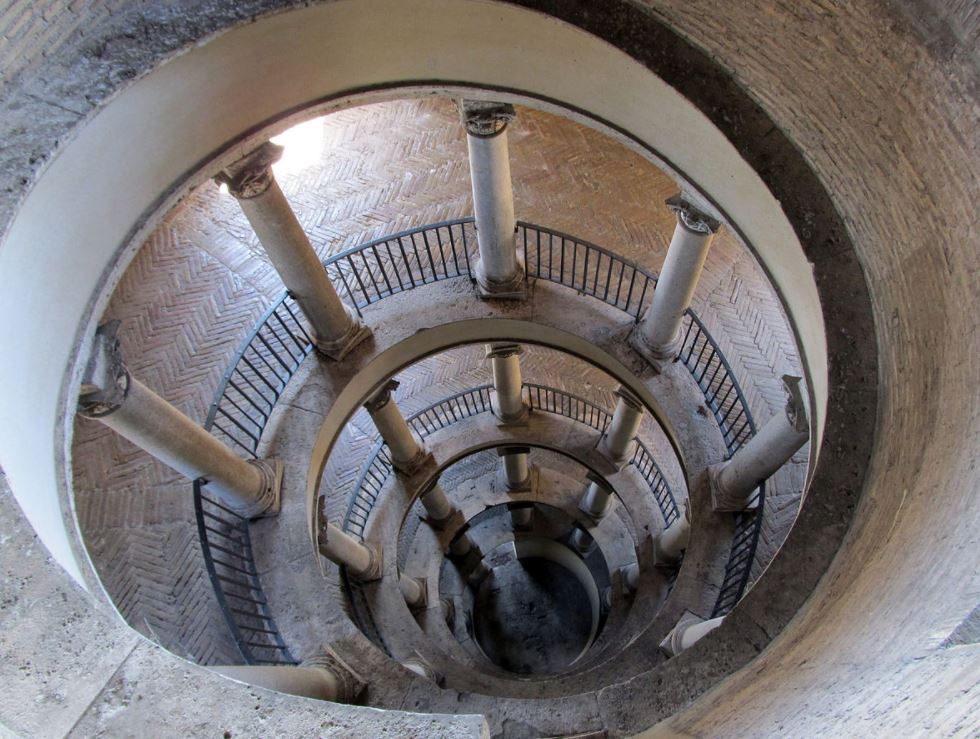
3. It’s located in a particular section of the Vatican Museum
The location where we can find the Bramante Staircase is now called the “Pio-Clementine Museum.” This section of the museum was named after the two Popes who established the museum, Clement XIV and Pius VI in the year 1771.
The museum now houses some of the most famous Greek and Roman sculptures in the world.
Originally, however, the staircase was intended to allow Pope Julius II to travel to his private residence at the Belvedere Palace in a carriage. This means he didn’t have to climb the set of stairs and simply remain seated to travel upstairs.
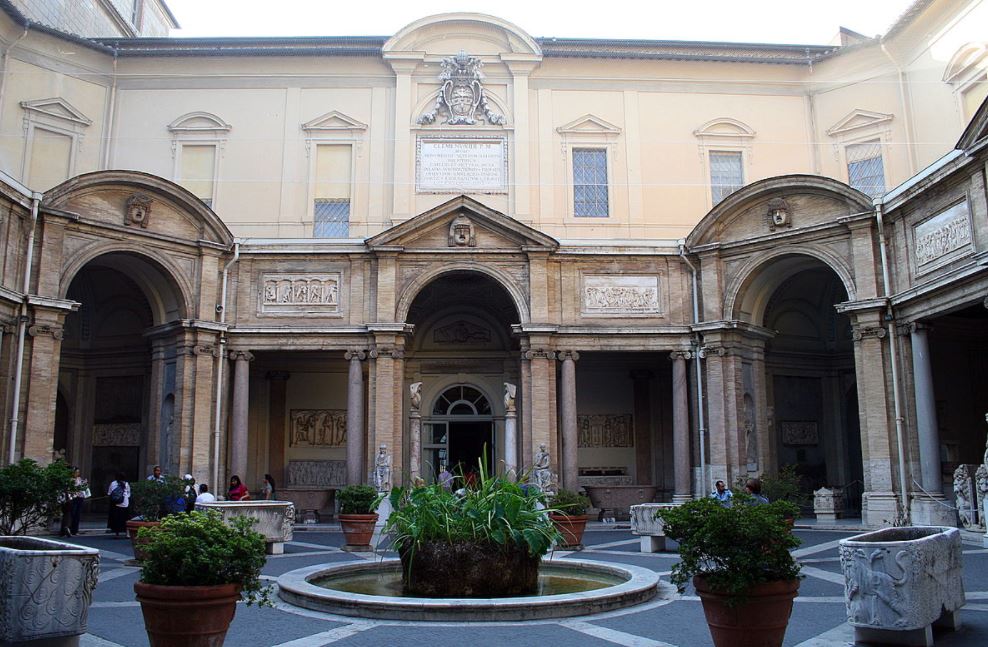
4. It was part of a much larger construction project
One of the most amazing facts about the Bramante Staircase is that it was part of a much larger construction project which connected the Belvedere Palace or Villa to the Vatican Palace via an extended courtyard.
The courtyard of the Belvedere Palace was also the work of Bramante, even though construction of the main structure had started During the reign of Pope Innocent VIII in 1484.

5. This feature makes the Bramante Staircase amazing
One of the most astounding features of the Bramante Staircase is that it consists of a double helix design. This means that the people or carriages using the stairs can travel up or down without actually meeting each other on the staircase itself.
This feature allowed for the Pope’s carriage to travel upstairs without meeting anybody coming from the other direction, a pretty ingenious design indeed!
Doric Columns support the entire structure and the pavement consists of a herringbone pattern (which means it resembles the bones of a herring, a particular type of fish).
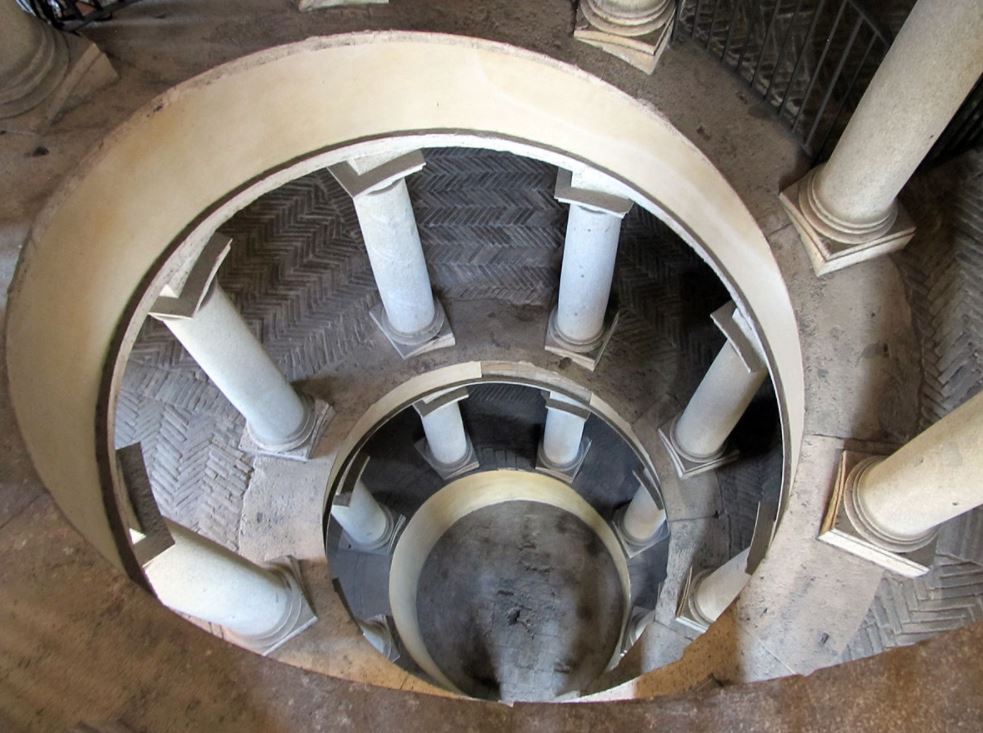
6. There’s more than 1 staircase like this in the museum
Even though the staircase designed by Bramante was completed in the year 1505, its name is also used for a staircase that was completed well over 400 years later in the year 1932.
This modern staircase was designed by Italian architect Giuseppe Momo (1875-1940) and was inspired by the original version of the Renaissance architect.
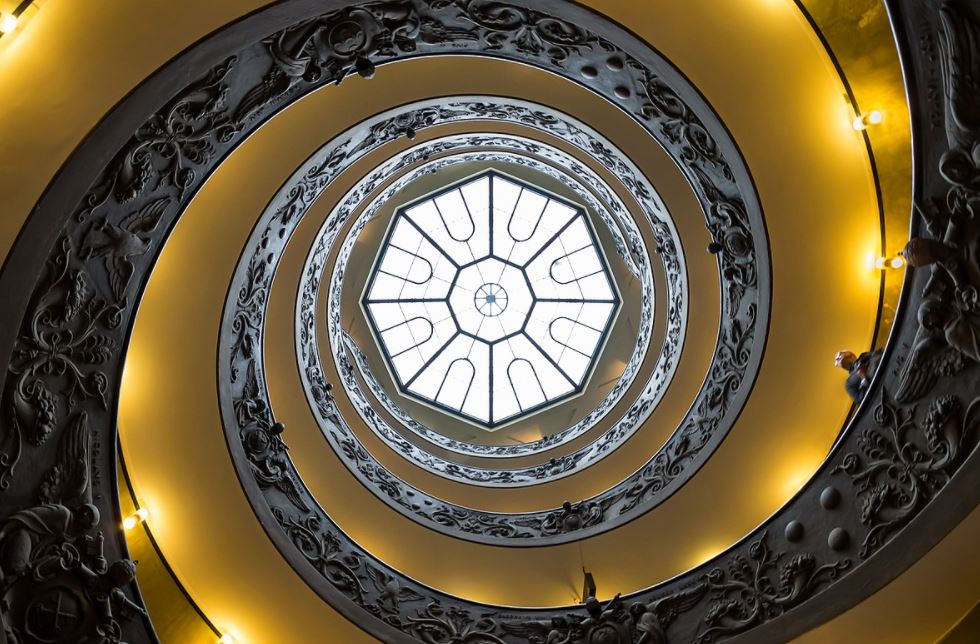
7. You will certainly come across the modern staircase in the museum
It’s impossible not to come across the modern version of the staircase (the one completed in the 1930s) if you visit the Vatican Museum. This is for the simple reason that every visitor must pass by it to get to the exit of this magnificent museum.
Just like the old version, this one features a double helix design which means that you won’t come across people ascending the stairs!
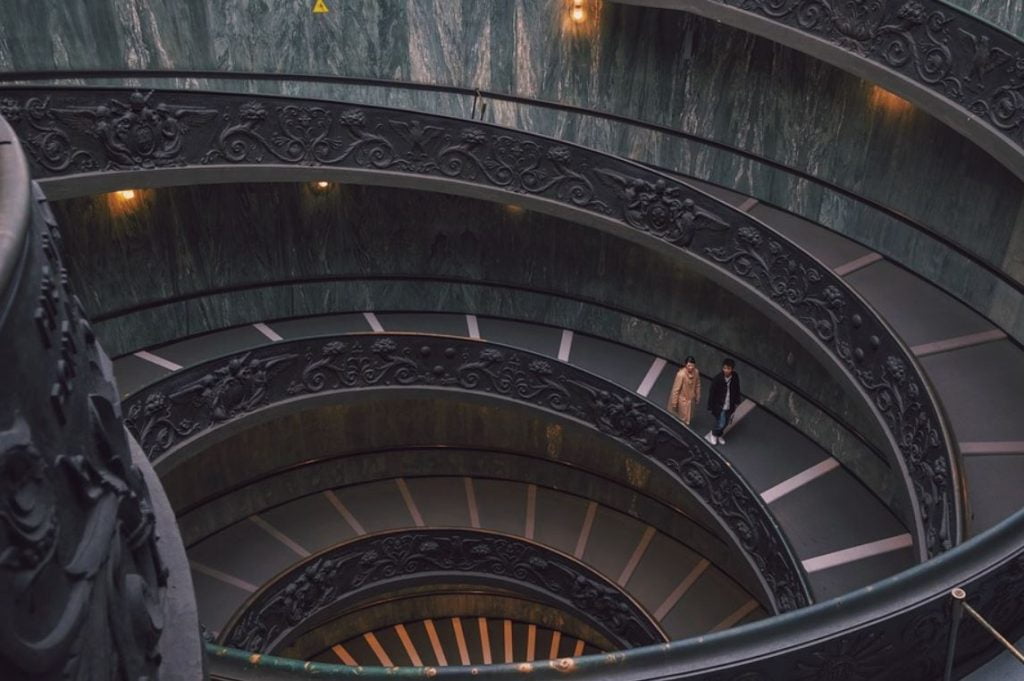
8. You’ll probably only see the modern version of the staircase
Unfortunately, the original Bramante Staircase isn’t an integral part of the Vatican Museum, which means that it’s not possible to admire it.
Unless you have a clear purpose as to why you should see the old version, you won’t be able to access it and will have to settle for the modern version, which is a pretty amazing alternative!
